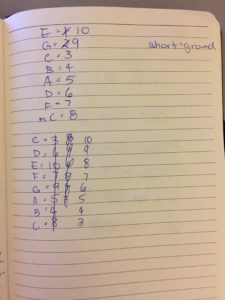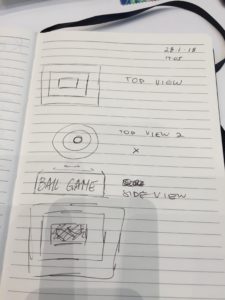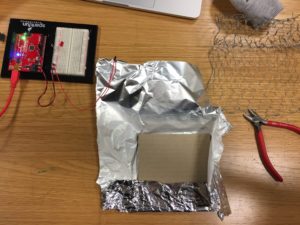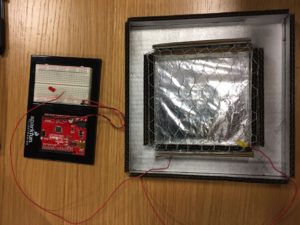In order to improve and work off of my last project I decided to program my lights to play twinkle twinkle little star (as LED interpretations). I got the idea from a show called ‘Switched at Birth’ where many deaf characters are protagonists. It is shown how deaf people typically experience interpretations of sound: through flashes of light. Therefore, I created something in the hopes to tailor to deaf babies. I used green and yellow LED’s as they are more calming and soothing for sleep.
I wrote down letter notes for how twinkle twinkle would be played on a piano, then translated each note to a PIN number. 
Originally I was going to play Brahm’s lullaby but decided against it as the RedBoard didn’t seem to be able to support all of the lights needed to create the system. 
So the idea was to create a seat pad for parents to sit on and when they got up to leave their child’s bedroom the light sequence would play. The video below shows it working: listen to it on mute!

 There were a couple of designs that I thought of. One of the ideas consisted of circles but I decided against it because it would logistically be a hassle. Using a square or rectangle would work just as well and without the trouble.
There were a couple of designs that I thought of. One of the ideas consisted of circles but I decided against it because it would logistically be a hassle. Using a square or rectangle would work just as well and without the trouble.
 After making sure the LED turns on, I cut and taped some wire to both the aluminum and chicken wire. I put all of the parts together using hot glue.
After making sure the LED turns on, I cut and taped some wire to both the aluminum and chicken wire. I put all of the parts together using hot glue.
